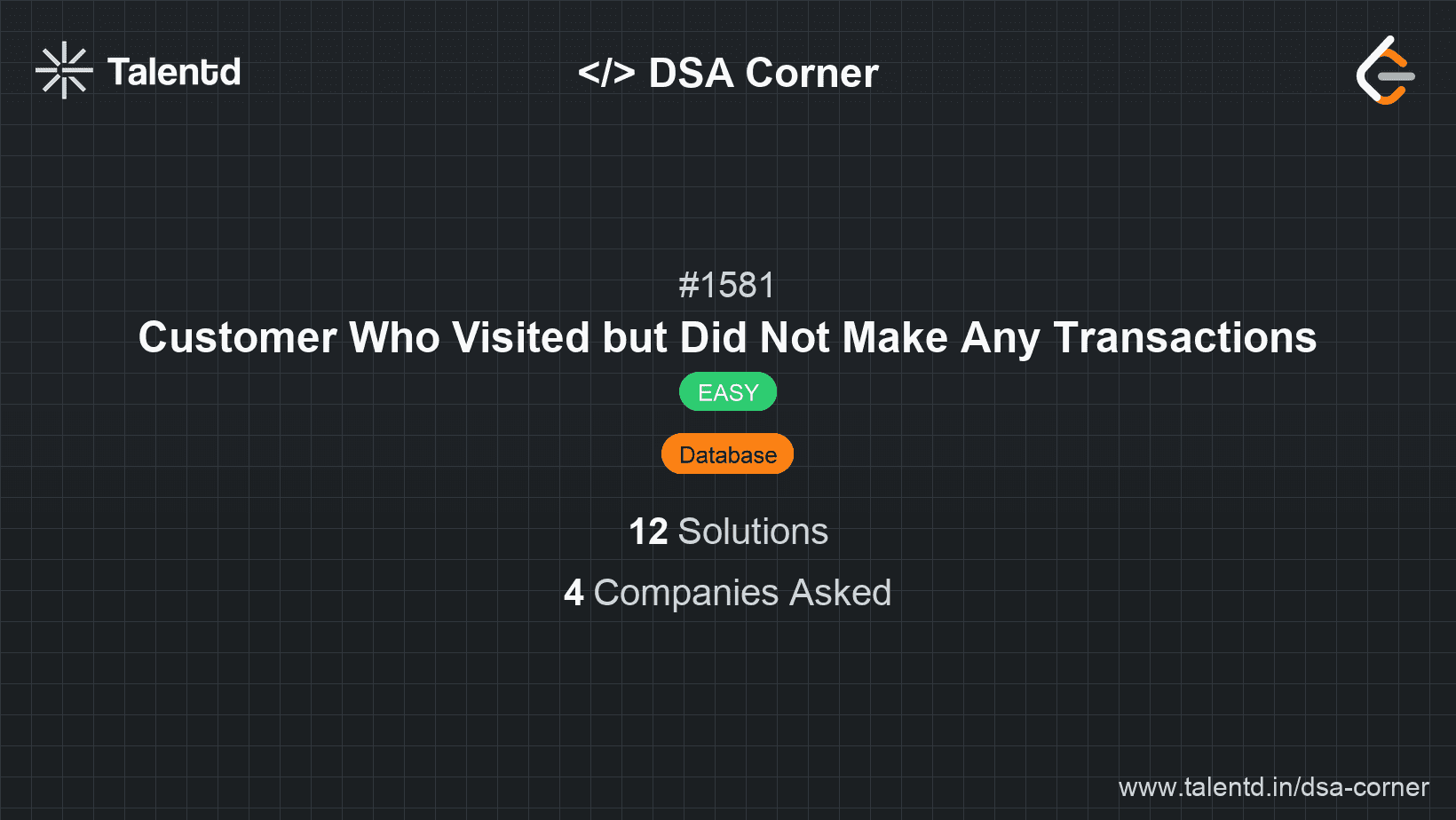
Sponsored
Sponsored
This approach utilizes SQL LEFT JOIN to find all visits that do not have corresponding transactions and GROUP BY to count the occurrences.
Time Complexity: O(N + M), where N is the number of rows in the Visits table and M is the number of rows in the Transactions table.
Space Complexity: O(K), where K is the number of unique customer_id entries in the result set.
1// Java with JDBC
2import java.sql.*;
3
4public class Main {
5 public static void main(String[] args) {
6 String url = "jdbc:sqlite:your_database.db";
7 String query = "SELECT customer_id, COUNT(visit_id) AS count_no_trans FROM Visits LEFT JOIN Transactions ON Visits.visit_id = Transactions.visit_id WHERE Transactions.transaction_id IS NULL GROUP BY customer_id;";
8
9 try (Connection conn = DriverManager.getConnection(url);
10 Statement stmt = conn.createStatement();
11 ResultSet rs = stmt.executeQuery(query)) {
12
13 while (rs.next()) {
14 System.out.println("customer_id: " + rs.getInt("customer_id") + ", count_no_trans: " + rs.getInt("count_no_trans"));
15 }
16 } catch (SQLException e) {
17 System.out.println(e.getMessage());
18 }
19 }
20}This Java solution makes use of JDBC to connect to a SQL database, run the appropriate SQL query, and process the results. The SQL query identifies visits that have no transactions by using LEFT JOIN and then groups and counts them accordingly.
This approach uses a subquery with NOT EXISTS to find all visits by customers that do not appear in the Transactions table.
Time Complexity: O(N * M), where N is the number of rows in the Visits table and M is the number of rows in the Transactions table.
Space Complexity: O(K), where K is the number of unique customer_id entries in the result set.
This Java example implements JDBC to run a SQL query with a subquery. It employs the NOT EXISTS clause to search for visits in the database that aren't part of any transaction, allowing us to track customer visits without purchases.